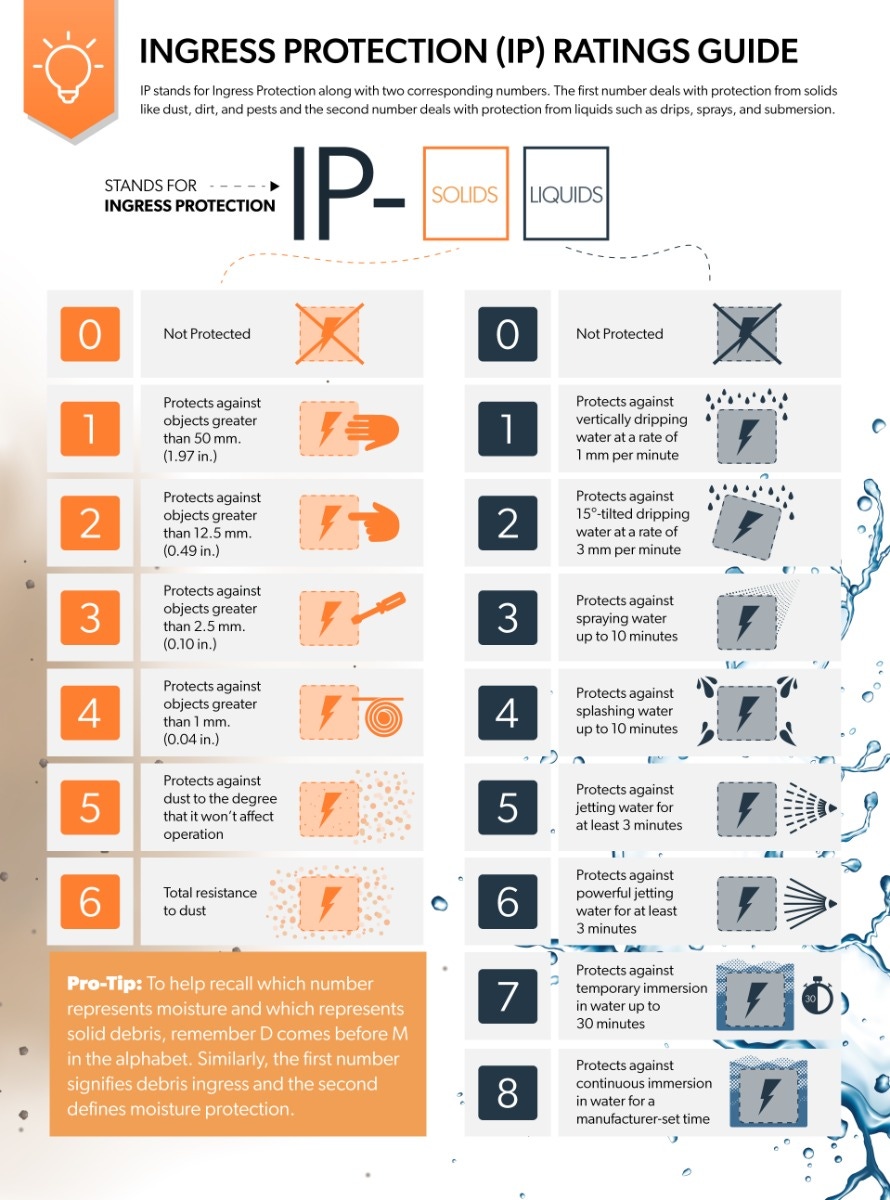Always Here for You.
Lighting Warehouse offers direct support to customers. We always have your back.

FEATURED BLOG
Published: 11/1/2022
If you’ve ever stood in the aisle of a home improvement store puzzlingly staring at a lightbulb box, you’re not alone. IP66 Rated, CL, UL Listed, RoHS, ETL Certified—what do these letters and numbers mean, and are they important to know? While it may seem like manufacturers find creative ways to confuse consumers, these letter-number combos—the IP ratings in particular—exist to help you shop better and smarter. We’ll unpack what IP ratings are and how they can save you time, money, and stress when charting your landscape lighting strategy.
Though technically shorthand for International Protection, IP is more commonly regarded as Ingress Protection since it’s indicative of the bulb’s resistance to various types of unwanted ingress such as sand, dirt, and moisture. Professional-grade landscape lighting products must be designed to withstand a vast range of outdoor environmental conditions while continuing to operate efficiently in order to preserve the life of the bulb. Now that we have the letters out of the way, let’s zero in on the numbers tailing IP.
The numbers that correspond with Ingress Protection have a specified meaning. The first number denotes the degree of protection from foreign solid debris like dust, dirt, and pests.
0: Not protected
1: Protects against objects greater than 50 mm. (1.97 in.)
2: Protects against objects greater than 12.5 mm. (0.49 in.)
3: Protects against objects greater than 2.5 mm. (0.10 in.)
4: Protects against objects greater than 1 mm. (0.04 in.)
5: Protects against dust to the degree that it won’t affect operation
6: Total resistance to dust
The second number after IP indicates the protection level from various types of moisture, including drips, sprays, and submersion. This number is especially useful for those residing in coastal regions where weather might grow a little more abrasive compared to more arid environments.
0: Not protected
1: Protects against vertically dripping water at a rate of 1 mm per minute
2: Protects against 15°-tilted dripping water at a rate of 3 mm per minute
3: Protects against spraying water up to 10 minutes
4: Protects against splashing water up to 10 minutes
5: Protects against jetting water for at least 3 minutes
6: Protects against powerful jetting water for at least 3 minutes
7: Protects against temporary immersion in water up to 30 minutes
8: Protects against continuous immersion in water for a manufacturer-set time
Pro-Tip: To help recall which number represents moisture and which represents solid debris, remember D comes before M in the alphabet. Similarly, the first number signifies debris ingress and the second defines moisture protection.

The reason we have a universal IP rating system is so that homeowners and contractors can be confident of how safe it is to use lighting products in specific environments and applications. Vague marketing terms like “waterproof” or “heavy-duty” don’t outline a clear definition of precisely where and to what extent an item can resist ingress. IP ratings provide a more specified account of a lamp’s strength.
As we’ve discovered, higher IP rated light fixtures are more tailored to areas that will be exposed to harsh weather conditions. Light fixtures rated IP65 and above are considered to be waterproof and are suitable for both indoor and outdoor use. IP65 and IP66 are common IP ratings that offer more protection.
These spaces require lights rated IP65 or higher:
Don’t let moisture put a damper on your lighting project. If you require further information about IP ratings or have questions about a bulb’s survivability in your specific location, feel free to contact a Lighting Warehouse customer service representative to better help you see the light.
An IP66 rating ensures protection against powerful jets while a rating of IP67 allows for temporary submersion in water for about half an hour. When shopping for outdoor lighting products, it’s better to opt for the light with the IP67 rating to better safeguard the bulb, though IP66 is still a satisfactory rating.
The most common rating for outdoor lights is IP65. If a light boasts an IP65, that means it can withstand dust-size debris as well as extreme weather conditions such as heavy rain and snow.
IP ratings of IP65, IP66, and IP67 are deemed waterproof per the standards set by the International Electrotechnical Commission (IEC).